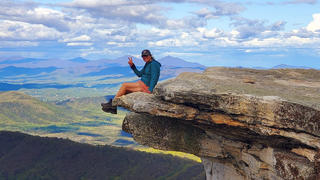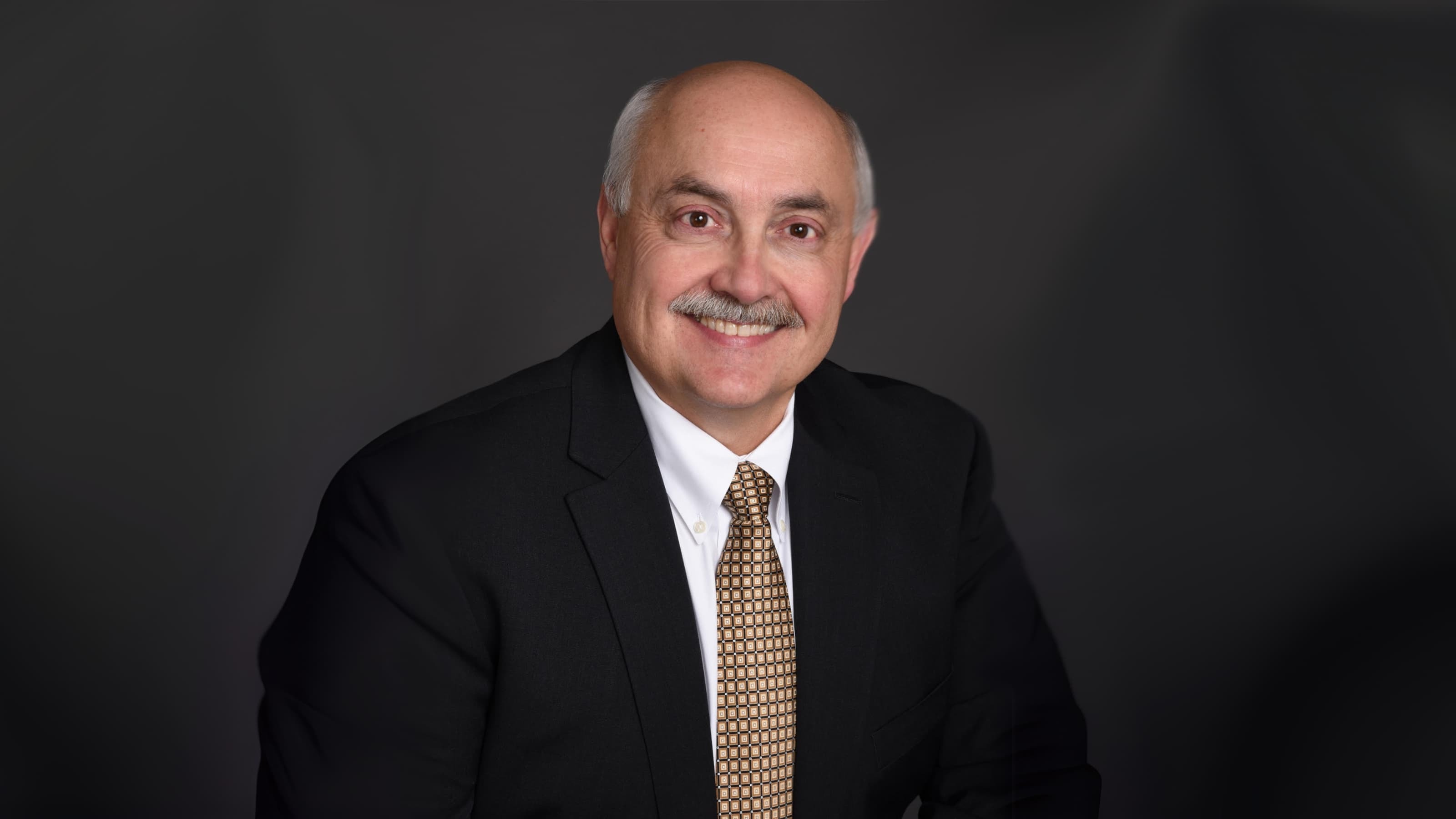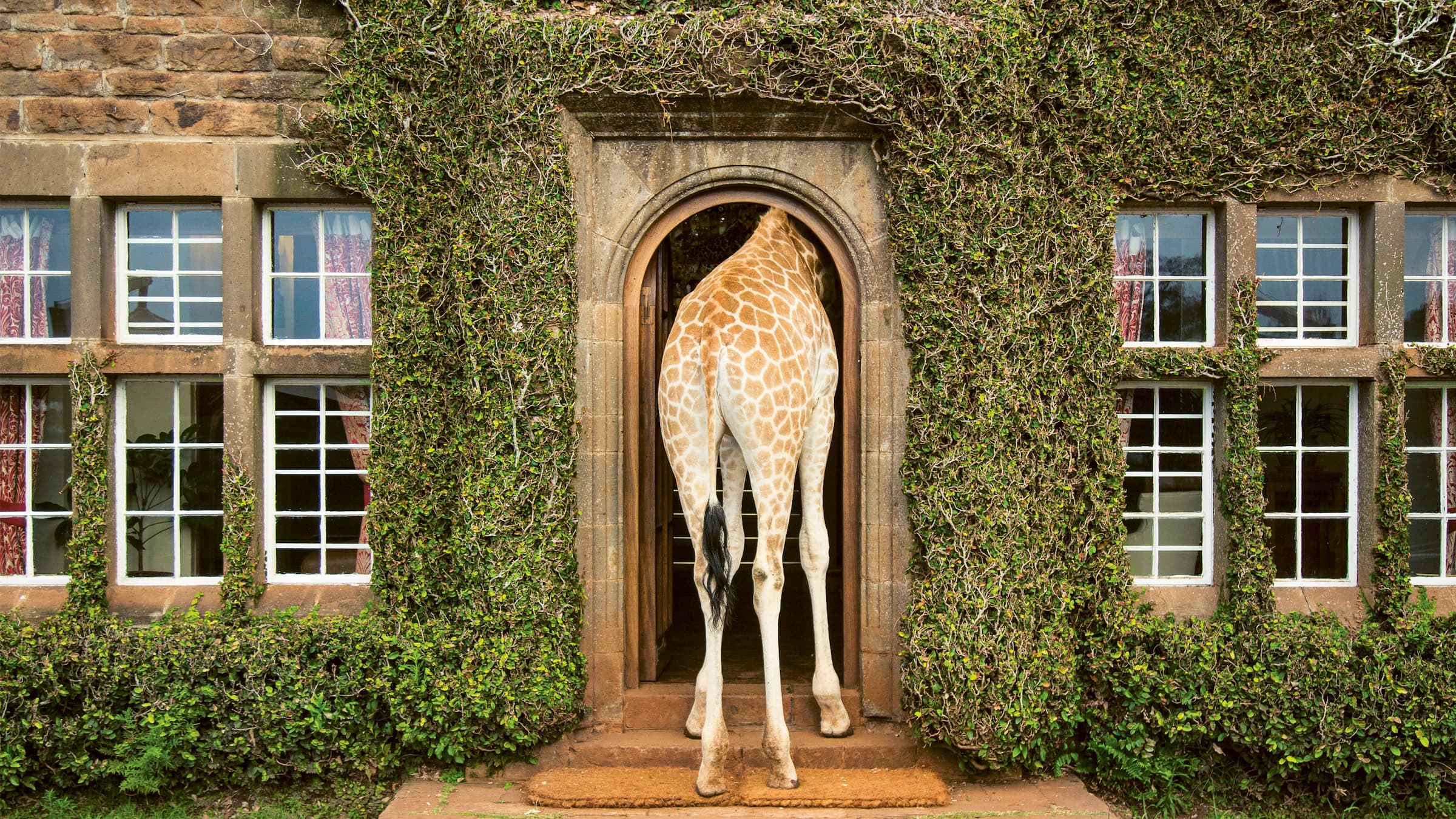Hawks Hike the Appalachian Trail
Two Saint Joseph’s alumni hiked the entire 2,200-mile trail in 2020 in pursuit of new challenges after major life events.
 Cathi Morris '01 on McAfee Knob in Catawba, VA
Cathi Morris '01 on McAfee Knob in Catawba, VA
- Gary Morrison ’93 and Cathi Morris ’01 each separately hiked the 2,200-mile trail, from Georgia to Maine, beginning in February and ending in August and October, respectively.
- COVID made the trail less crowded than normal years, but Morrison and Morris remained on the trail and befriended other hikers who stayed behind.
- Despite the physical and mental labors, the beautiful nature and friendly hiking community made this a great experience for both hikers.
Standing at the base of Mount Washington, alumna Cathi Morris ’01 had one thought: “Today is the day I’m going to die.” She was alone, her knees were in pain and she had reached one of the most dangerous parts of the trail. It was a journey she began in February 2020, hiking the Appalachian Trail, and it was a journey she was determined to finish.
It turns out Morris wasn’t the only Hawk standing in awe of the White Mountains last year. Saint Joseph’s alumnus Gary Morrison ’93 had added the 2,193-mile hike to his bucket list after being diagnosed with cancer two years prior. Both trips were unknowingly planned before the COVID-19 pandemic started to spread in the United States, and both journeys had changed Morris and Morrison’s lives for the better.
For Morris, the trek was about embracing a new challenge.
“I had checked off all of the boxes of things I was supposed to do, and accomplished the goals that were expected of me. I’d gone through college, gotten married, held jobs,” she explains. But still, something was missing.
Morris’ brother had passed away 10 years before, opening her eyes to how short life is, and causing her to reflect on what she wanted to do with her own life. “I never wanted to sit in an office, and I knew I couldn’t get everything out of a job that I needed.”
She left her marketing job and started working on a farm. She traveled out to California, spent some time in Yosemite, and fell in love with the mountains. Eventually, she realized she wanted to do a full trail hike.
“I felt like doing a long-distance hike out west would be too challenging, logistically,” says Morris. “I looked around at trails on the east coast, and the Appalachian Trail made the most sense to me.”
According to the Appalachian Trail Conservancy, the Appalachian Trail is the longest hiking-only footpath in the world. It runs from Maine to Georgia, spanning over 2,000 miles through 14 states. In 2018, 1,128 hikers completed the 2,193-mile hike.
Gary Morrison would become another one of those hikers in 2020.
“I started hiking five years ago when my girlfriend and I got a new puppy,” he explains. “She wanted to take the puppy on a trail and I got dragged along – and I ended up really enjoying it!” He began hiking regularly on different parts of the Appalachian Trail throughout New Jersey, New York and Connecticut. At St. Joe’s, Morrison was an athlete who ran track. “Distance never bothered me,” he says.
Then, two years ago, Morrison was diagnosed with cancer. He started a bucket list.
“One night in January, I saw a television program about people going southbound on the trail,” he says. “My girlfriend made an off-handed comment that I should do this. Five weeks later, I was driving down to Georgia.”
“The confidence you get when you hike up 5,000 feet for the first time, and you look back and think: Oh my God, I did that!”
Preparing for the Journey Amid a Pandemic
Morris hiked the entire trail, from Springer Mountain, Ga., to Katahdin, Me., where she finished in October. She prepared for her hike by spending a few nights in a tent in her backyard in the winter. She bought different equipment, including a lighter, a backpacking stove, a canister of fuel and a tent to make sure she’d be warm enough in temperatures as low as 12 degrees. She also knew she’d need to be able to find water.
At the beginning, the COVID-19 pandemic threw a wrench into the trip. “The government closed down the national parks I had to get through,” she explains. “The trail runs through small towns that would normally have hostels and restaurants, but nothing was open except the post offices.”
Morris had also intended to go to church at least once a month in the different towns, but the pandemic forced the churches to close. However, she credits her time at St. Joe’s with giving her a foundation to have a close relationship with her faith, even in the woods. As a student, Morris spent a lot of time in chapel, and worked with the ministry through the Appalachia Experience. “St. Joe’s was probably where I first felt, as an adult, my relationship with Christ.”
It was a relationship she would come to appreciate even more on the desolate hike. “Eighty percent of hikers got off the trail by the end of March,” she explains. “I did pick up a hiking partner in North Carolina, but there was a 12-day span when we were in Virginia, where we didn’t see anyone else. That was the height of when everyone was isolating inside. But there was no risk for us, because we were alone in the woods.”
Morrison was also among the hikers who stayed on the trail.
“It was almost like being in a Stephen King novel. We’d be hearing rumors about all of the stuff that was happening,” he says, referring to the COVID-19 pandemic. “I’d talk to my girlfriend every other day, and other hikers would pass along news. It was really weird, and there may have been a slight fear of not being able to get food in any of the towns, but I never had a bad experience.”
Reaching New Heights
The trail is physically arduous, and both Morris and Morrison struggled with knee pain throughout their trips. At 6,288 feet high, Mount Washington in New Hampshire was a physical and mental challenge for each of them. The mountain is part of the Presidential Range, notorious for its dangerous, erratic weather and hurricane-force wind gusts up to 110 days a year.
“That was the only other time I was scared,” Morris admits. “The White Mountains are beautiful and treacherous. There is no room for error when it comes to weather, when you’re up over 6,000 feet above the tree-line and can see a storm coming for miles away and you know you need to get down the mountain before it hits.” Morris was alone when she climbed those mountains. “I was scared. I remember looking around and thinking ‘No one knows where I am.’ It was a very daunting and lonely feeling.”
Unlike Morris, Morrison was stuck on the White Mountains overnight, which hikers are strongly advised against. “I lost contact with my hiking buddies, and then a rainstorm hit that wasn’t in the forecast that morning. I jumped into a crevasse to get out of the rain, and spent the night there, in 70-mile-per-hour winds and temperatures in the high 40s.”
The next day he emerged from the crevasse soaked, sore and exhausted, but he made it down the mountain. He would reach the end of the trail on Aug. 26 — six months and a day from when he started.
Trail Magic
Despite the physical and mental trials, there were wonderful things that more than made up for the hardships. The beauty of the trail is evident all over Morris’ and Morrison’s Facebook pages, from snow-frosted forests, to layers of blue mountains, to landscapes quilted with fiery autumn hues. Their mile progress is spelled out every hundred miles in twigs, snow, stones, flowers and leaves.
“The confidence you get when you hike up 5,000 feet for the first time, and you look back and think: Oh my God, I did that! That was a feeling of confidence I’d never had before. It was a wonderful feeling, to be 100% at ease in the wilderness,” Morris says.
For Morrison, he’ll never forget the companions he made on his journey. “The relationships – helping each other out, being there for each other – that was the best part,” he says. “I never thought I’d be able to build relationships like that. They’ll be with me forever.”
He also met people through Trail Magic – a community that supports through-hikers by setting up food buffets at road crossings and offering lodging or places to bunk for the night. “They do this out of the kindness of their hearts. They don’t really accept money. Some of them can’t hike anymore, or they’ve finished hiking the trail already. They just love the community,” he says.
But it wasn’t just the community of Trail Magic that helped Morrison on his trip. His friends and fellow alumni provided emotional support. “One of my best friends at St. Joe’s – Gabe Wilson – sent me a care box before I left,” he says. “A fellow track runner from St. Joe’s named Steve Kittridge also saw that I was hiking the Appalachian Trail. The trail runs through his property, so he picked up me and a few hiker friends and took us out to dinner. Steve didn’t let us spend a dime. All of my hiking buddies fell in love with him.” So many of his friends and classmates from St. Joe’s have been reaching out to him on social media about his trip. “My friendships I had at the University just bubbled up again. Their support, the positive messages they texted and emailed and commented … they were just phenomenal.”
Morris agrees. “People think this world is so bad because people on TV or social media tell them it’s bad. But if you go out there, you see it’s pretty awesome.”











